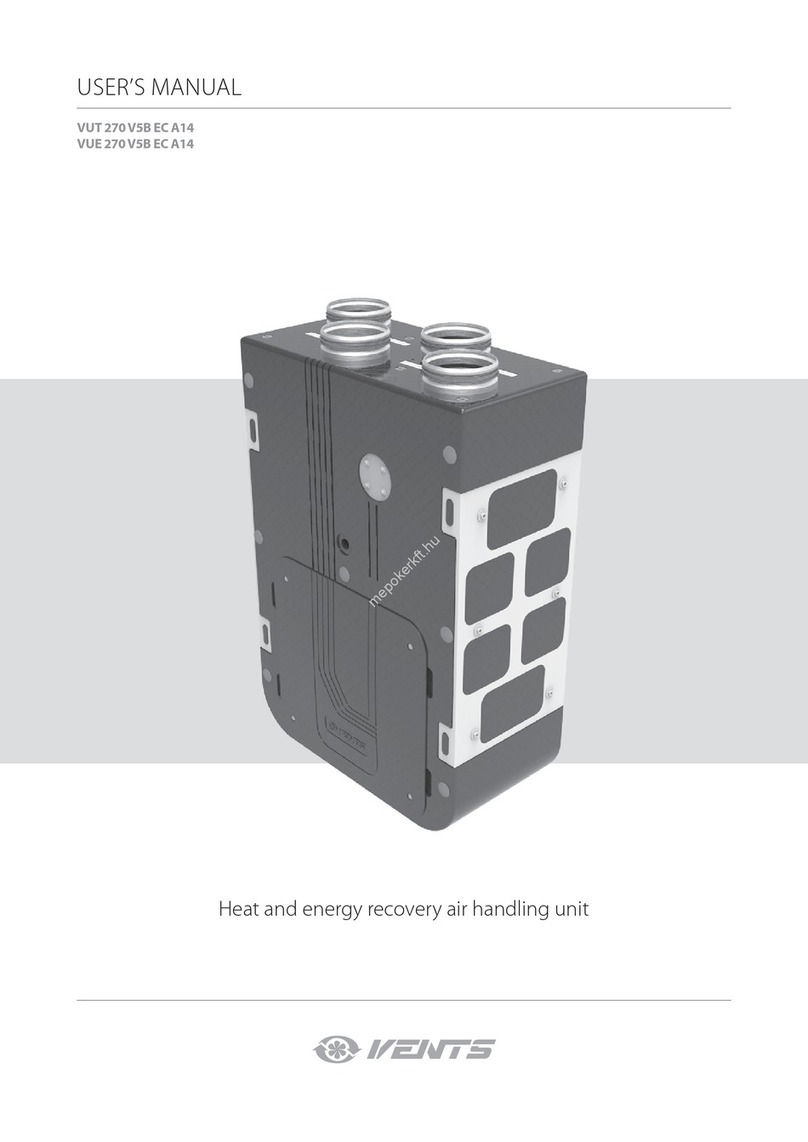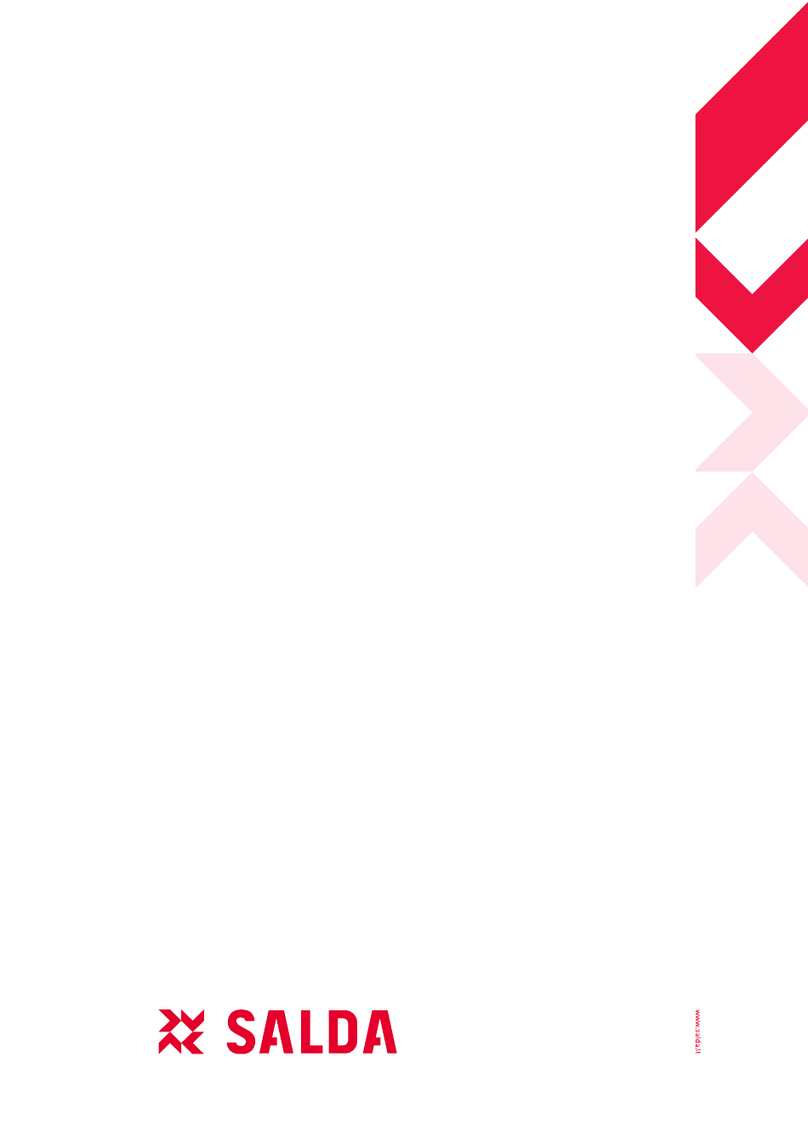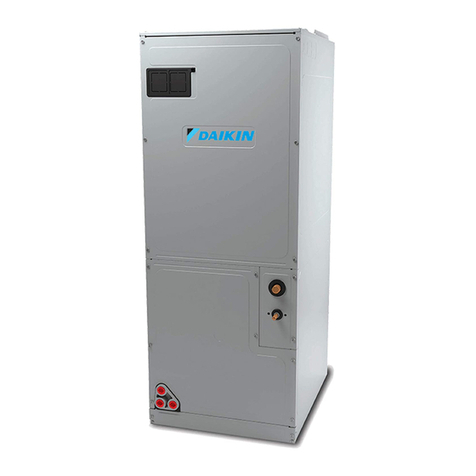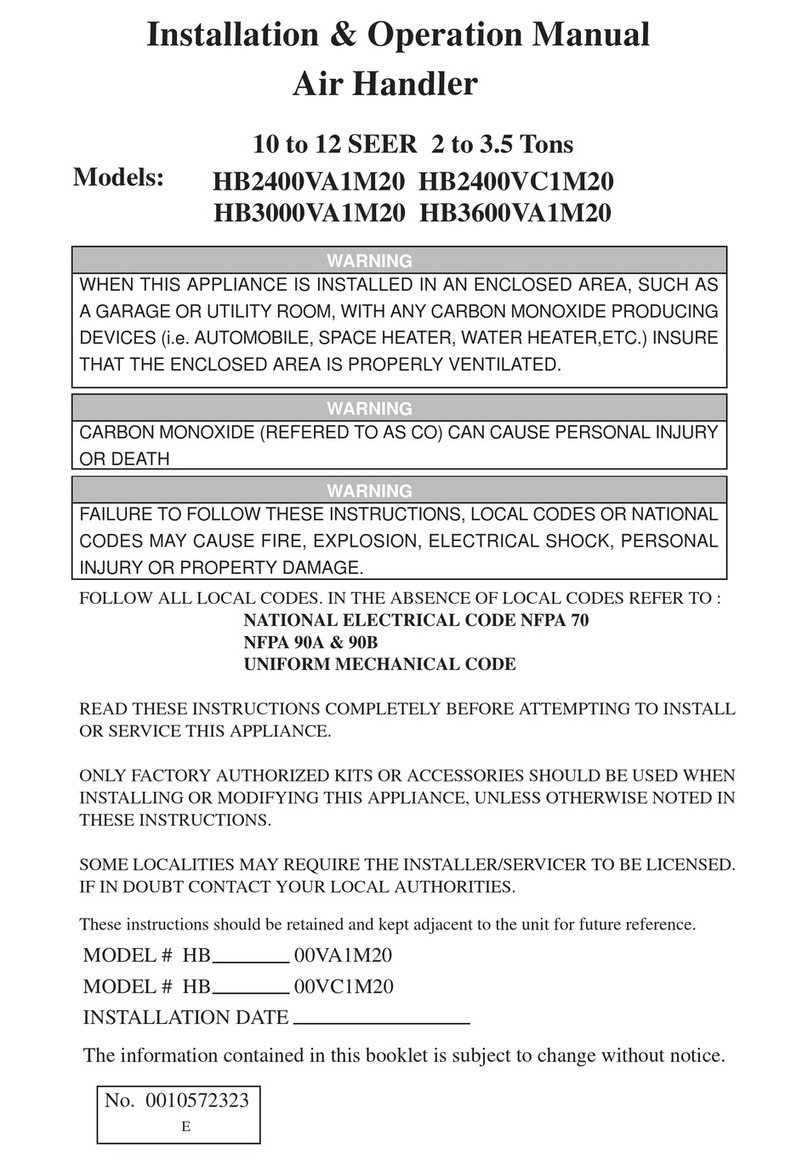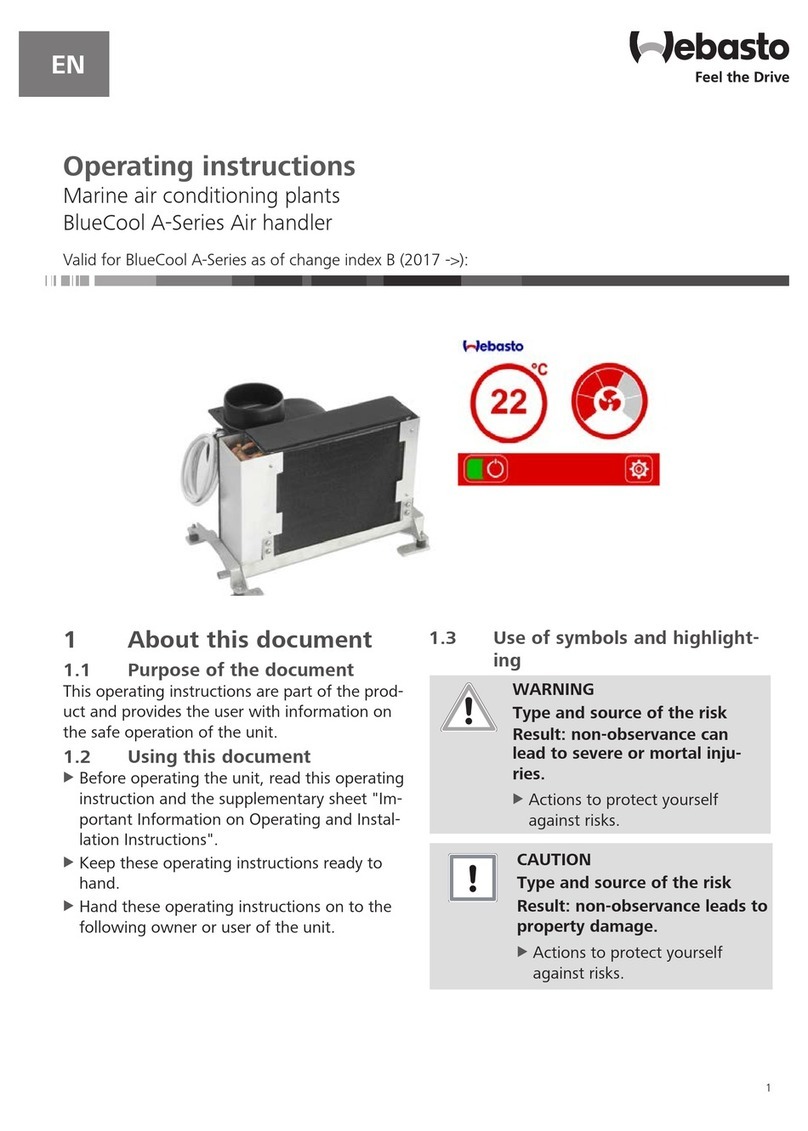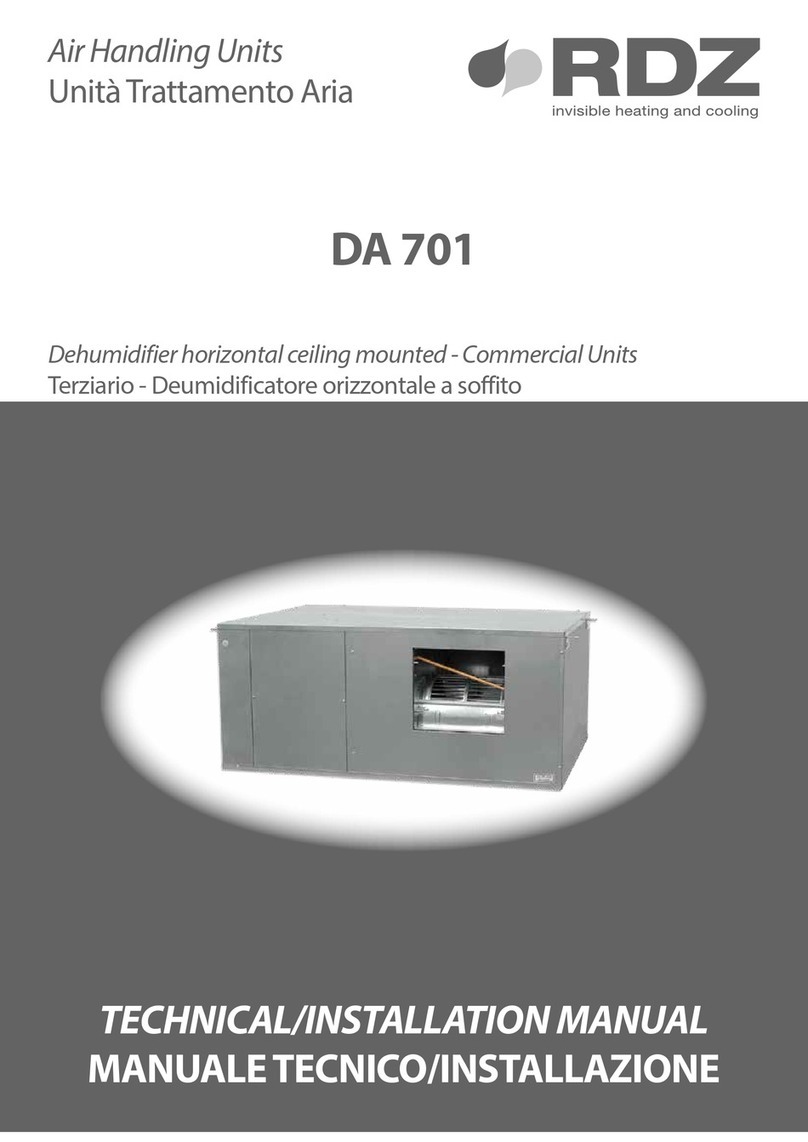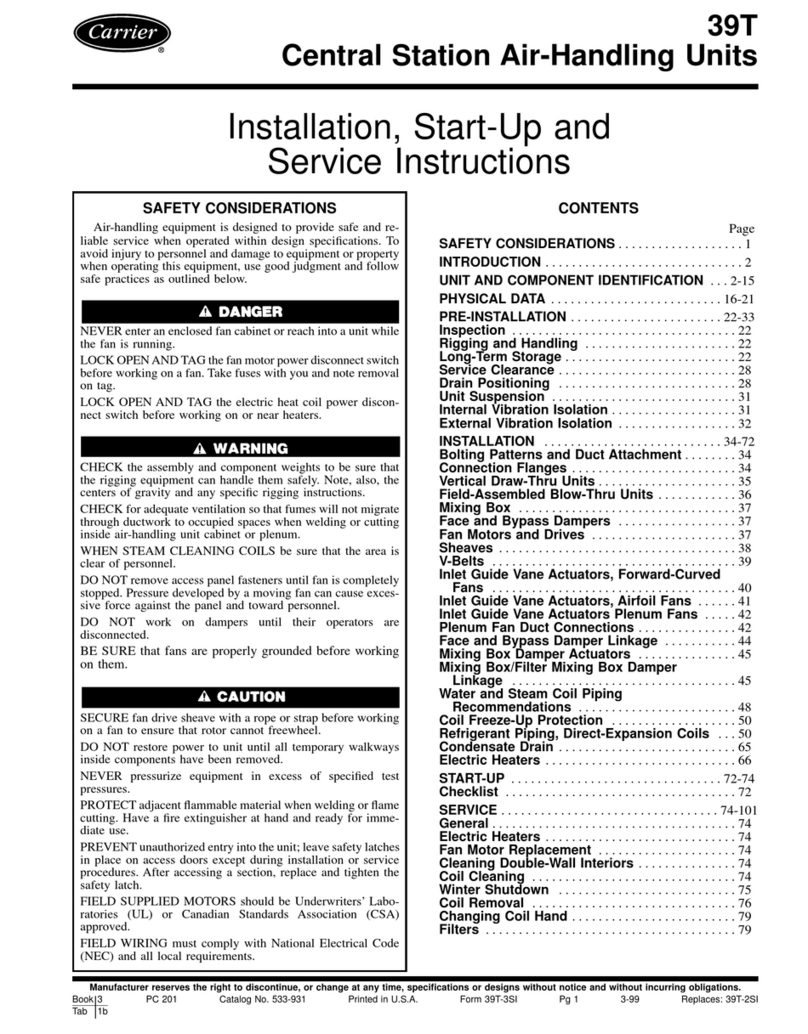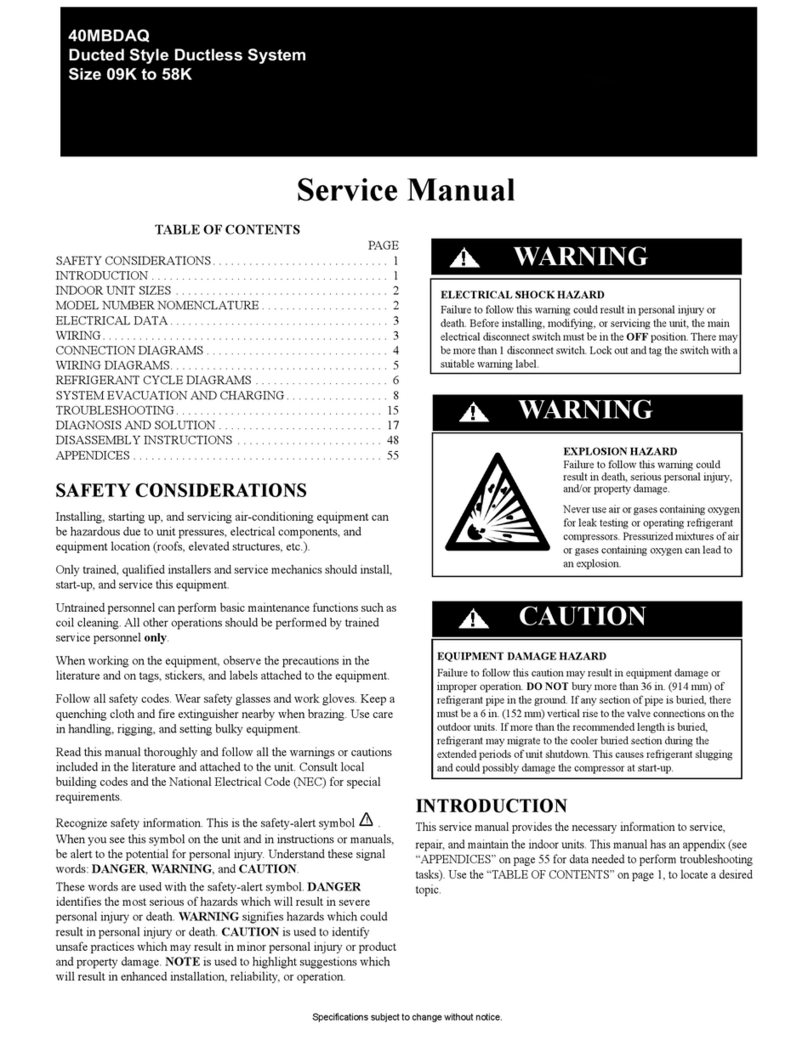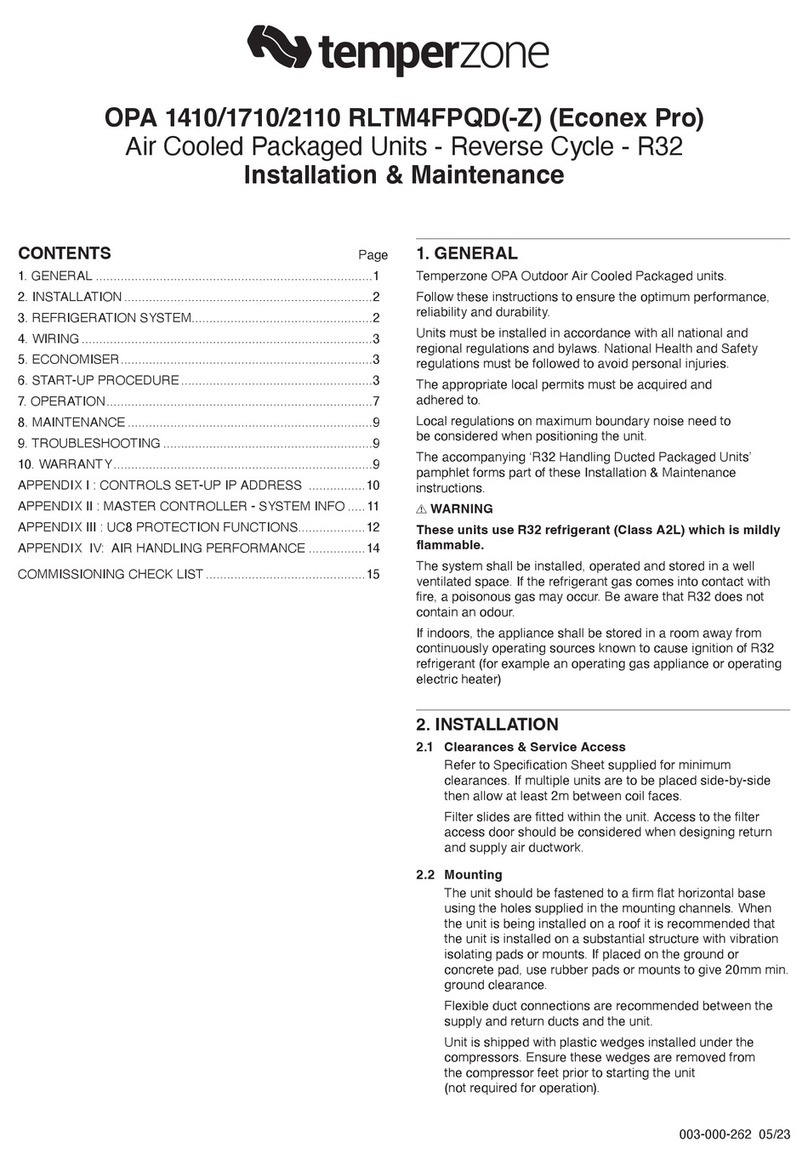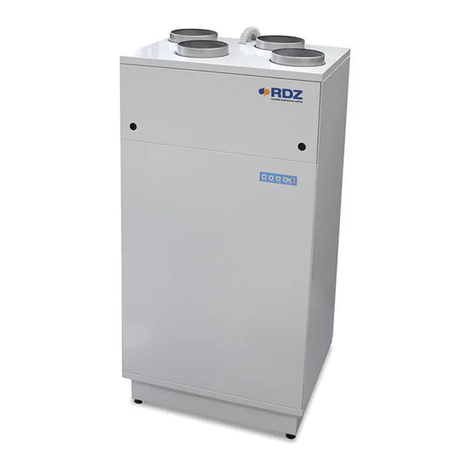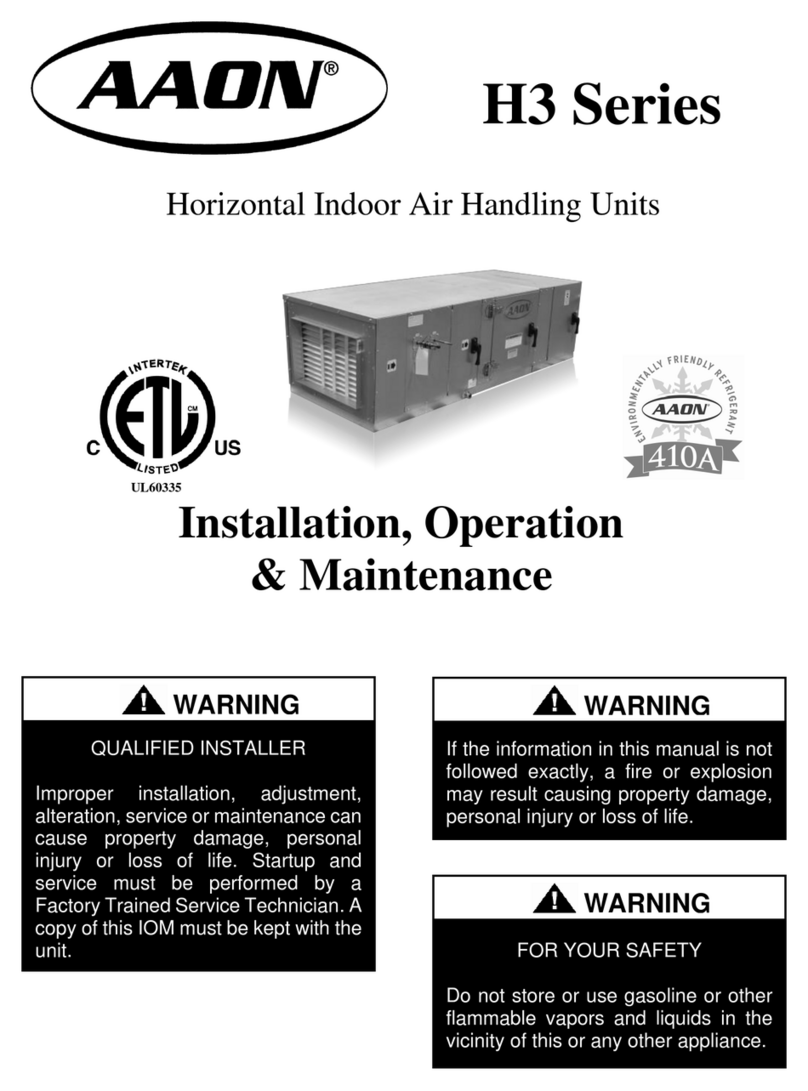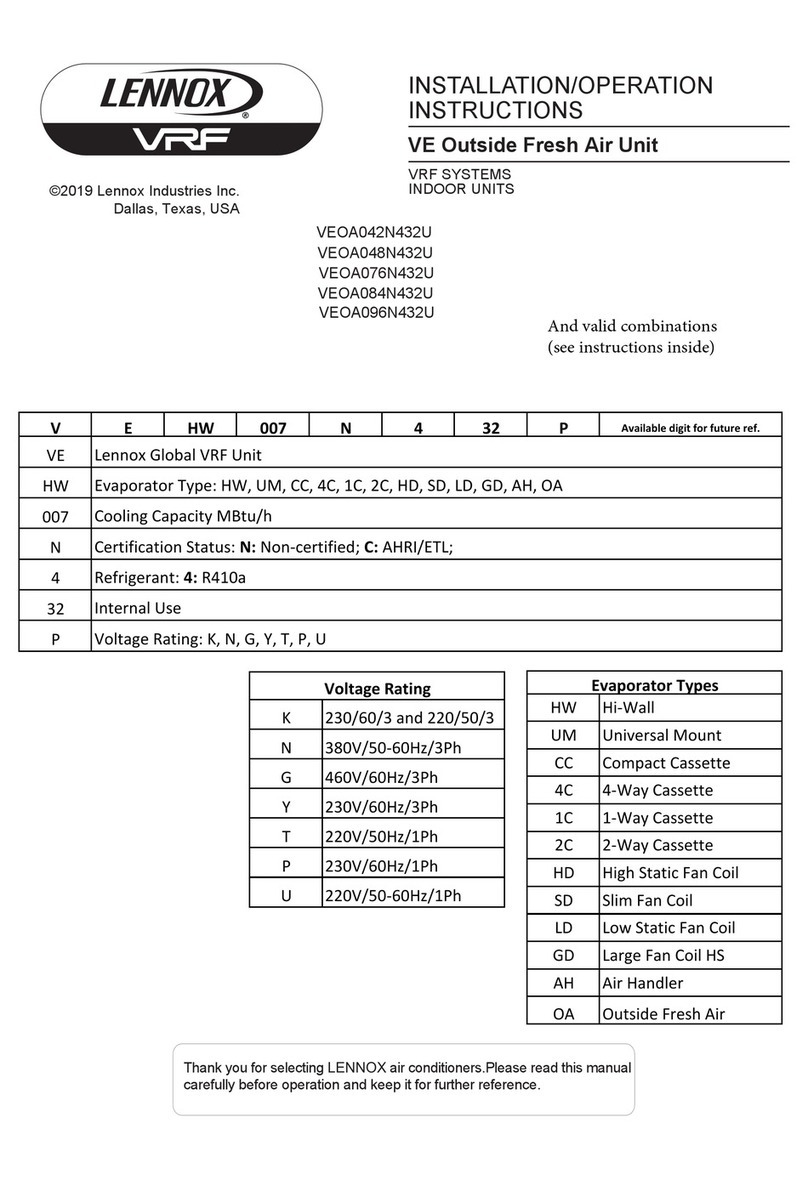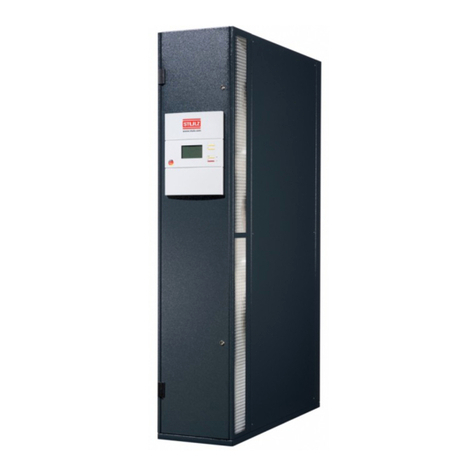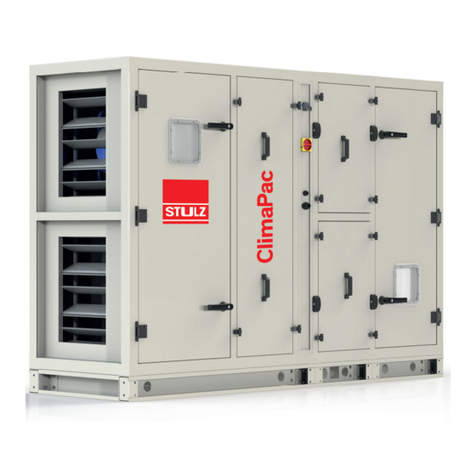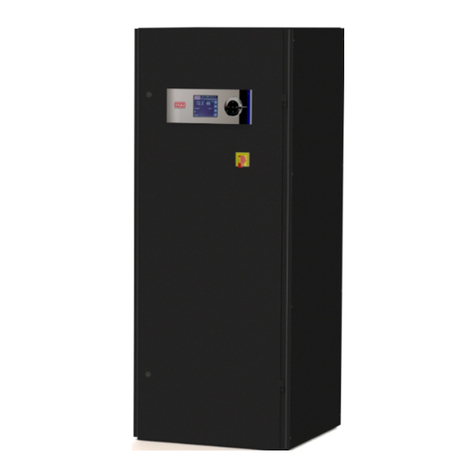
2EN/05.2019 © STULZ GmbH – all rights reserved
CYBERHANDLER 2 INSTALLATION, OPERATION AND MAINTENANCE MANUAL
Contents
1 Information on this manual . . . . . . . . . . . . . . . . . . . . . . . . . . 3
1.1 Safety signs. . . . . . . . . . . . . . . . . . . . . . . . . . . . . . . . . . .3
1.2 components signs . . . . . . . . . . . . . . . . . . . . . . . . . . . . . . . 3
2 Safety . . . . . . . . . . . . . . . . . . . . . . . . . . . . . . . . . . . . . . 4
2.1 Intended use . . . . . . . . . . . . . . . . . . . . . . . . . . . . . . . . . . 4
2.2 Safety Instructions . . . . . . . . . . . . . . . . . . . . . . . . . . . . . . . 4
2.3 Handling refrigerants (units with DX Top-up or DX Redundant) . . . . . . 5
2.4 Safety and environmental requirements . . . . . . . . . . . . . . . . . . . 6
3 Residual risks. . . . . . . . . . . . . . . . . . . . . . . . . . . . . . . . . .7
4 Description . . . . . . . . . . . . . . . . . . . . . . . . . . . . . . . . . . . 9
4.1 Type Code . . . . . . . . . . . . . . . . . . . . . . . . . . . . . . . . . . . 9
4.2 Air Handling Unit design. . . . . . . . . . . . . . . . . . . . . . . . . . . 10
4.3 Operation limits. . . . . . . . . . . . . . . . . . . . . . . . . . . . . . . . 12
4.4 Technical data . . . . . . . . . . . . . . . . . . . . . . . . . . . . . . . . 12
5 Delivery/Transport/Storage. . . . . . . . . . . . . . . . . . . . . . . . . 13
5.1 Delivery of units . . . . . . . . . . . . . . . . . . . . . . . . . . . . . . . 13
5.2 Storage . . . . . . . . . . . . . . . . . . . . . . . . . . . . . . . . . . . . 13
5.3 Transport . . . . . . . . . . . . . . . . . . . . . . . . . . . . . . . . . . . 13
5.3.1 Transport with forklift . . . . . . . . . . . . . . . . . . . . . . . . . 13
5.3.2 Transport with crane (via shackles). . . . . . . . . . . . . . . . . . 14
6 Assembly and Installation . . . . . . . . . . . . . . . . . . . . . . . . . . 15
6.1 Supplied parts . . . . . . . . . . . . . . . . . . . . . . . . . . . . . . . . 15
6.2 Unit placement . . . . . . . . . . . . . . . . . . . . . . . . . . . . . . . . 15
6.3 Assembly (units in several parts) . . . . . . . . . . . . . . . . . . . . . . 18
6.4 Installation . . . . . . . . . . . . . . . . . . . . . . . . . . . . . . . . . . 20
6.4.1 Electrical connection . . . . . . . . . . . . . . . . . . . . . . . . . 20
6.4.2 Adiabatic system. . . . . . . . . . . . . . . . . . . . . . . . . . . . 21
6.4.3 Cooling Coil (version CWT/CWR/DXR). . . . . . . . . . . . . . . . 23
6.4.4 Refrigerant circuit (version DXT/DXR) . . . . . . . . . . . . . . . . 24
7 Commissioning . . . . . . . . . . . . . . . . . . . . . . . . . . . . . . . .29
7.1 Refrigerant circuit . . . . . . . . . . . . . . . . . . . . . . . . . . . . . . 29
7.2 Adiabatic System . . . . . . . . . . . . . . . . . . . . . . . . . . . . . . . 30
7.3 CW coil . . . . . . . . . . . . . . . . . . . . . . . . . . . . . . . . . . . . 31
8 Maintenance . . . . . . . . . . . . . . . . . . . . . . . . . . . . . . . . . 32
8.1 Safety instructions . . . . . . . . . . . . . . . . . . . . . . . . . . . . . . 32
8.2 Periodic maintenance . . . . . . . . . . . . . . . . . . . . . . . . . . . . 32
8.3 Air filters . . . . . . . . . . . . . . . . . . . . . . . . . . . . . . . . . . . 34
8.4 Plate heat exchanger . . . . . . . . . . . . . . . . . . . . . . . . . . . . 34
8.5 Plate-fin heat exchangers (Cooling coil, heating coils) . . . . . . . . . . 34
8.6 EC fans . . . . . . . . . . . . . . . . . . . . . . . . . . . . . . . . . . . . 35
8.7 Adiabatic system . . . . . . . . . . . . . . . . . . . . . . . . . . . . . . . 36
8.8 Refrigerant circuit . . . . . . . . . . . . . . . . . . . . . . . . . . . . . . 37
8.9 Unit housing . . . . . . . . . . . . . . . . . . . . . . . . . . . . . . . . . 40
9 Dismantling and disposal . . . . . . . . . . . . . . . . . . . . . . . . . . 41
10 Contents of the CE declaration of conformity . . . . . . . . . . . . . . . 43
